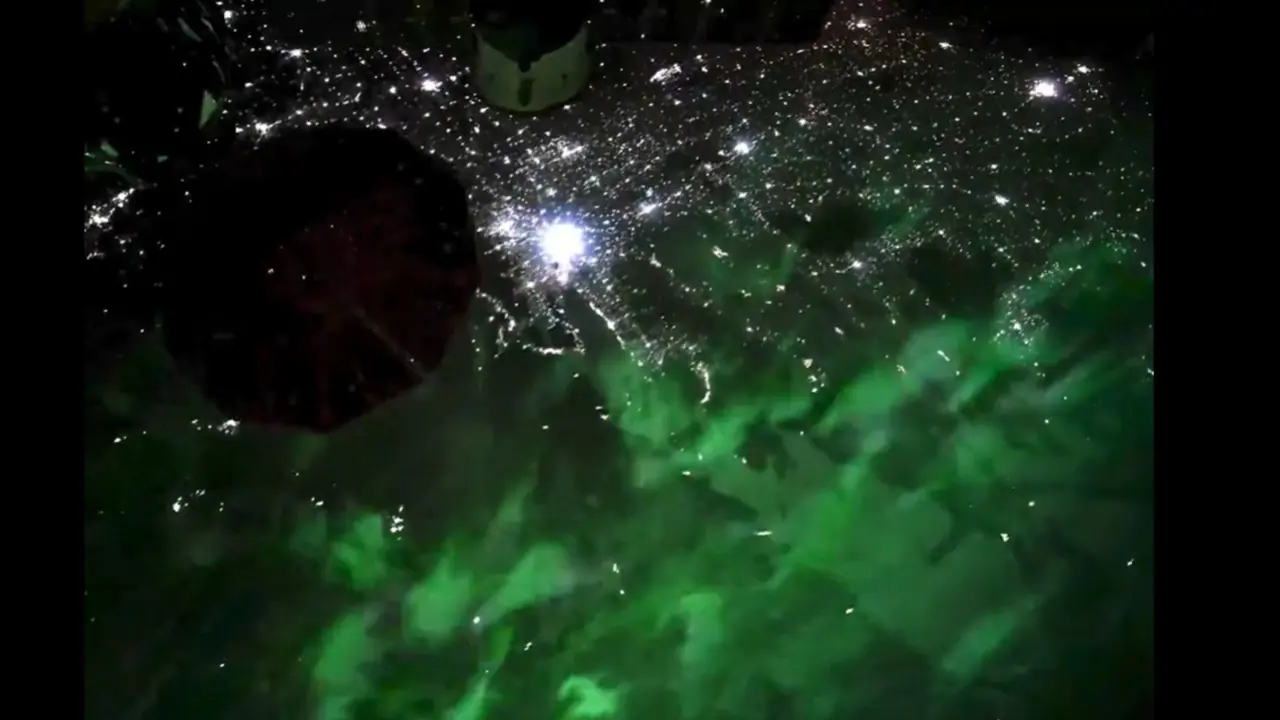NASA astronaut Don Pettit recently unveiled a breathtaking perspective of the aurora borealis as seen from the International Space Station (ISS).
The ethereal dance of the Northern Lights is often admired from Earth, but few have the privilege of witnessing this spectacle from above. NASA astronaut Don Pettit recently unveiled a breathtaking perspective of the aurora borealis as seen from the International Space Station (ISS).

Sharing his experience on X, (formerly Twitter), Pettit posted, "Flying over aurora; intensely green." Accompanying his words was a mesmerizing video showcasing the space station’s lower structures silhouetted against the radiant green glow of the aurora, creating a visual masterpiece.
The Northern Lights, typically forming at altitudes between 60 to 186 miles (100 to 300 km), pale in comparison to the ISS’s altitude of approximately 230 to 285 miles (370 to 460 km). From this vantage point, astronauts like Pettit can marvel at the aurora from a unique bird’s-eye view, revealing its intricate details and vivid hues.
At 69, Don Pettit is NASA’s oldest astronaut, currently on his third mission aboard the ISS as part of the Expedition 72 crew. Renowned for his exceptional orbital photography, Pettit has spent over 300 days in space capturing Earth's splendor, with his aurora images earning him widespread acclaim.
The phenomenon of the Northern and Southern Lights occurs when charged particles from the sun collide with Earth's atmosphere, energizing gas particles to emit light. These glowing gases, visible from the ISS, are predominantly green due to oxygen molecules, though occasional hints of pink and blue stem from nitrogen.
Awe From Space and Beyond
Pettit’s video sparked wonder among social media users, with one commenter exclaiming, "It’s like a massive emerald come alive!" Another added, "Not sure how I thought it would look from above, but this is incredible."
While the aurora is usually confined to high latitudes near the poles, solar events like coronal mass ejections can create geomagnetic storms, pushing the vibrant display farther south. Pettit’s footage was captured amidst such heightened solar activity, marked by X-class solar flares – the most intense kind – and a massive coronal hole releasing streams of solar wind.
The recent surge in auroral brilliance coincides with the sun’s solar maximum, the peak of its 11-year activity cycle. With increased sunspots and solar flares, stunning auroral displays are becoming more frequent, offering astronauts more opportunities to document these celestial wonders.
NASA has cautioned that while solar flares can disrupt communication systems and pose risks to spacecraft, no significant disturbances were reported during these recent events. Instead, the heightened solar activity has gifted humanity with awe-inspiring visuals, serving as a testament to the beauty and power of our cosmos.
